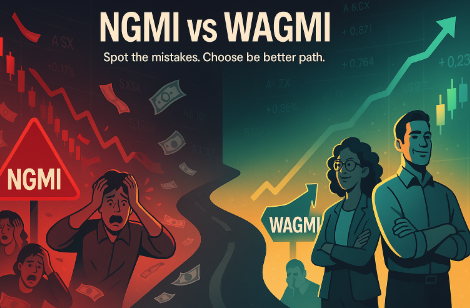
Why is it that building or renovation cost estimates are always — and I mean always — wrong? Usually significantly so.
If you’ve ever watched shows like Grand Designs, or undertaken a bit of remodelling yourself, you know this to be true. Projects that are completed on-time and on-budget are rarer than hen’s teeth.
This is especially true for “nation building” infrastructure projects.
It really shouldn’t be that hard; get some quotes, add it all up and add a bit extra for safety. But even those with deep experience will tend to get it wrong using this approach.
The reason is because we tend to underestimate complexity and overestimate our ability to execute. And lots small uncertainties can really add up. Not only that, but setbacks in one area can have unexpected knock-on consequences elsewhere.
It’s the same for building a business. Or, indeed, growing a business. And this is relevant to investors for two reasons.
First, when management outline their expectations for the future we need to remember they are likely going to be wrong. Too often investors see this as dodgy behaviour, but for the most part it’s just well intentioned guesswork falling short of reality (although it’s fair to say that, as with politicians, listed companies will tend to lean heavily towards the most optimistic set of assumptions).
Key management personal have put their heads together, looked at the market opportunity, estimated the necessary resourcing and thumb-sucked the expected take up. They probably even added in a decent buffer too, knowing that things don’t always go to plan.
But as with renovating your kitchen, it’ll likely turn out that things will take longer and cost more than first thought. It’s not a conspiracy to defraud investors — not usually anyway — and it’s not something that should necessarily cause you to sell out. So long as the risk/reward remains attractive, even after accounting for some delays and added costs, it probably pays to stick with it.
Where things start to go awry is when management push ahead even after it becomes clear that things aren’t likely to work out. And the sunk-cost fallacy, combined with good old fashioned ego, makes this more likely than you might imagine.
By not acknowledging the challenges, or perhaps the flaws in the original assumptions, things start to get really bad. The cover up is almost always worse than the crime.
Frankly, I don’t mark down a management team too harshly if the expansion into a new product or geography didn’t go well — lots of well reasoned plans don’t deliver as expected. Business is just hard. In fact, I’ll give them extra points if they can candidly admit and own the ‘mistake’.
Just don’t piss on my boots and tell me it’s raining.
The other area where it pays to be careful with estimates is when you are trying to value a business. Especially if you like to build detailed discounted cash flow models.
Trying to estimate all the individual line items of a company’s income statement seems like a sensible thing to do, but as with renovations it’s very likely that a lot of small errors will add up. To be clear, it can be very valuable to undertake such a detailed analysis, but it pays to check the results against some rules of thumb to make sure you remain grounded.
For example, if you’re looking at a retailer and at year ten your spreadsheet shows a net profit margin of 30%, it’s safe to assume you’re estimates are wrong in aggregate. You just don’t tend to see such margins in that industry.
Experienced builders usually give quotes based on very rough heuristics; things such as average cost per square foot. It feels overly simplistic compared to a detailed breakdown of all the costs and services, but it tends to be far more reliable. And this is something we should keep in mind when valuing a business.
These days, I like to simply grow the top line by a set amount, use a reasonable net margin estimate and then apply an average market multiple. Yes, it lacks a lot of sophistication. You could call it crude, even. But given all the vagaries of forecasting I tend to find it rather practical.
Just remember that when it comes to money — either spending it or making it — we’re predisposed to looking at things in a very optimistic way. And we also like to confuse complexity for accuracy.
Munger said it best: Some of the worst business decisions I’ve seen came with detailed analysis. The higher math was false precision. They do that in business schools, because they’ve got to do something.
Strawman is Australia’s premier online investment club.
Members share research & recommendations on ASX-listed stocks by managing Virtual Portfolios and building Company Reports. By ranking content according to performance and community endorsement, Strawman provides accountable and peer-reviewed investment insights.
Disclaimer– Strawman is not a broker and you cannot purchase shares through the platform. All trades on Strawman use play money and are intended only as a tool to gain experience and have fun. No content on Strawman should be considered an inducement to to buy or sell real world financial securities, and you should seek professional advice before making any investment decisions.
© 2023 Strawman Pty Ltd. All rights reserved.
| Privacy Policy | Terms of Service |
ACN: 610 908 211







